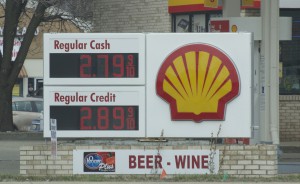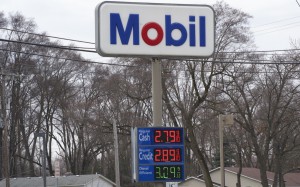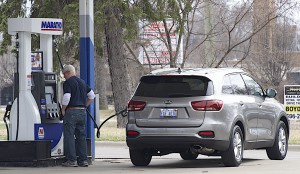
Gas prices have been on the rise since the beginning of this year. However, the jump has been more severe in the last seven weeks.
New vehicle sales have been on the decline all year as higher interest rates and lower incentives combine to drive down demand. Now consumers are seeing another auto-related cost climbing upward: gas prices.
Across the U.S., gas prices have risen for the last seven weeks. As of April 1, the national average, according to GasBuddy.com, was $2.69 a gallon. It was a jump of 3.9 cents in one week and the highest prices it has been in 142 days.
Diesel prices are also on the rise, albeit not as steeply, rising just 0.2 cents per gallon last week to an average $3.02 a gallon. On top of that, GasBuddy’s own information suggests that as of April 7, the prices have jumped another 6 cents a gallon since April 1.
“There’s no fooling motorists, gas prices have continued to surge. For the seventh straight week the national average has continued to rise, unabated, due to seasonal impacts,” said said Patrick DeHaan, head of petroleum analysis for GasBuddy.
“The run-up this spring has felt worse than prior years, and thus far, the national average is up nearly 50 cents per gallon from our 2019 low. Unfortunately, this a rut we’ll be stuck in yet for at least a few more weeks.”

All indicators point to gas prices exceeding $3 per gallon in the near future. They've risen to $2.75 on average across the U.S.
(2019 Gren Car winners announced at D.C. Auto Show. Click Here for the story.)
Despite ongoing attempts by the Trump administration to get OPEC to lower prices, crude oil prices continue to rise.
“Very important that OPEC increase the flow of Oil. World Markets are fragile, price of Oil getting too high. Thank you!” Trump tweeted recently.
Prices jumped over the last week, with West Texas Intermediate crude oil up 63 cents in trading Monday morning, up $2.08 per barrel versus a week ago to stand at $60.75, a fresh multi-month high. Brent crude also went up, up nearly $2 per barrel from $66.73 a week ago to $68.42 in early Monday trading, the website noted.
“President Trump, as much as he’d like to control oil and gasoline prices, has not be able to successfully convince OPEC to respond, with oil prices last week closing above $60 per barrel, a fresh 2019 high,” DeHaan said, noting that OPEC’s unwillingness to play ball isn’t the only reason for the jump in prices.
(Click Here for details about why 70% of Americans are afraid of driving in an autonomous vehicle.)
“What the President may not realize is that while oil prices have been a minor piece of the pie of rising gas prices, the bulk remains EPA mandates during the summer months that coincide with refineries doing work ahead of the intense demand during the summer in which most run near capacity.”
Oil inventories are on the rise, according to the Energy Information Administration, jumping by some 2.8 million barrels last week. Normally that would mean prices would slide, but gasoline and distillate inventories posted declines. Gasoline stockpiles were off by nearly 3 million barrels, falling under year-ago levels while distillates more than 2 million barrels.
Refinery utilization dipped recently too, as the conversion to seasonal blends took place, further ensuring the continuing rise of prices in the near term. Large drops in utilization were seen in the Gulf Coast region, Rocky Mountain region and West Coast region. The Midwest saw a slight drop while the East Coast saw a 1.1% rise in utilization.
Gas prices are yet again likely to increase in a majority of states with the national average likely to rise with no easy discernible peak is yet seen for U.S. gas prices, the website predicted. The market expects further tightening in global crude availability as a result of OPEC’s 1.2 million barrels per day production cut and the U.S. imposing sanctions on Iranian and Venezuelan crude exports, AAA noted.
(To see more about EVs and gas-powered vehicles costing the same by 2022, Click Here.)
Venezuelan oil production is down sharply in the wake of the political upheaval there, and it’s unlikely that is going to change any time in the near term. Moving into this week, prices will likely continue their ascent. DeHaan recently predicted that prices could exceed $3 a gallon before there is any kind of relief.

